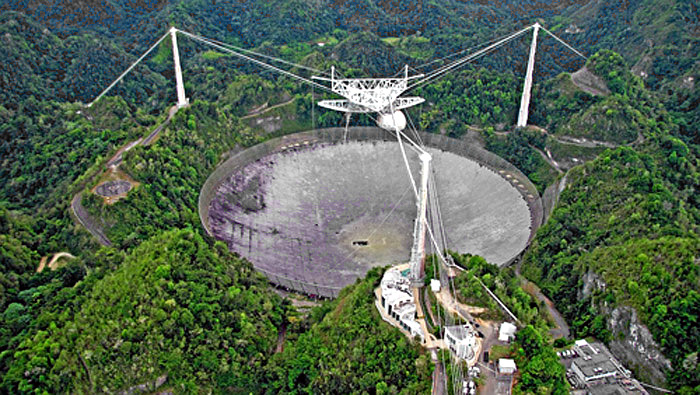What are the biggest telescopes in the world?
The Biggest Telescopes in the World – and some not in the world
I show you the currently active biggest telescopes and also preview even bigger ones that are being built right now.
You know that the nerd loves telescopes! They are buckets that collect light. And the bigger the bucket the more light they can collect! So, the biggest telescopes in the world are the biggest gatherers of light. And that is a whole lot of goodness! So let’s take a look at them!
The definition of “biggest” for a telescope is subject to a bit of interpretation. Some telescopes are made of a mirror ground from a single piece of glass. But even larger telescopes are composed of a honeycomb of smaller mirrors placed together to create a larger mirror. This type of telescope is called a segmented mirror telescope. A laser system is used to keep all the mirrors perfectly aligned so they act as one mirror.
This picture shows you a segmented mirror.
And yet other telescopes are two or more mirror telescopes that work in tandem. With this type you can think of a pair of binoculars. This type of telescope can be operated as one telescope or they can be used individually.
This picture shows a Large Binocular Telescope.
So here are the biggest telescopes in the world:
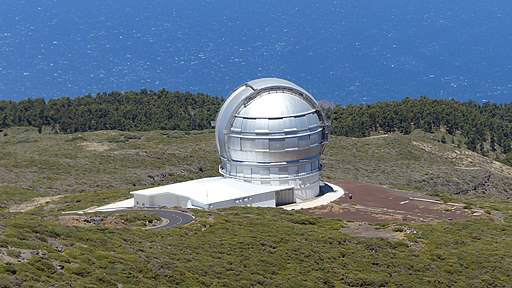
- Gran Telescopio Canarias – This is a reflector telescope that has a segmented mirror composed of 36 smaller mirrors. It is located in Spain in the Canary Islands and the total size of the mirror is 10.4 meters (409 inches) in diameter. It achieved first light in 2007 and cost 130 million euros to build. This telescope is the undisputed largest telescope in the world and I have more about it right here.
- Keck 1 and Keck 2 – These two telescopes make up what is called the Keck Observatory. . Each telescope is a reflector with a mirror of 10 meters in diameter. They are located near the summit of Mauna Kea in Hawaii. The first one was completed in 1993 and the second in 1996. They were the first large telescopes to use a process called Adaptive Optics. It is a method of using a deformable mirror to correct for turbulence in the earths atmosphere. It is such a sensitive and accurate system that it can adapt and change the mirror 2,000 times a second. This is an unprecedented achievement and it allow the telescopes to capture images with ten times more clarity.
- The mirrors in the Keck telescopes are of the segmented type.
- Hobby-Eberly Telescope (HET)- It has a mirror telescope composed of 91 segments (effective diameter is 10 Meters.) This telescope is specially designed for spectroscopy which is the color spectrum you see when light passes through a prism. It is the project of two US universities and two German universities. And it is located at the Mcdonald Observatory in West Texas on Davis Mountain.. Note that the Nerd has visited this observatory. I have pictures and more about it here. McDonald Observatory and the Hobby Eberly Telescope
- South African Large Telescope (SALT) – South African Astronomical Observatory in Sutherland South Africa. It has a 9.2 meter effective diameter segmented mirror and it went into service in 2005. An interesting design element of this telescope is that the primary mirror isn’t designed to fully track an object in the sky. This is done with the secondary element at prime focus. This had a significant cost reduction impact. Instead of the massive primary mirror having to be accurately moved the much smaller secondary unit is moved.
- Large Binocular Telescope (LBT) – The Large Binocular – Mount Graham Observatory in Arizona. Each mirror has an effective diameter of 8.4 meters. Technically when these two telescopes are used in tandem they have a total effective aperture of 11.82 meters which technically makes the duo the largest telescope in the world. And each of the mirrors are a single piece of glass; they are not segmented mirrors like most of the others on our list. This makes them the largest single mirror telescopes in the world.
- Subaru Telescope – at Mauna Kea in Hawaii (8.2 meter clear aperture) It is a single monolithic mirror, not segmented. It is operated by the National Astronomical Observatory of Japan and is named after the Pleiades – (Subaru is the Japanese name for the Pleiades). But it is not located in Japan. It is located at the Mauna Kea observatory in Hawaii right along side the two Keck telescopes.
- The Very Large Telescope (VLT) – These next four make up what is called The Very Large Telescope or VLT: They are located at the Paranal Observatory in Chile. Each telescope has a monolithic (single piece of glass) mirror with a diameter of 8.2 meters and a clear aperture of 8 meters. The first of the four went into operation in 1998. The four telescopes are named:Antu, Keuyen, Melipal, and Yepun which are the names of celestial objects in the native Mapuche language.
- Generally the four telescopes are used independtly of each other for various research projects but occasionally they are used all in conjunction to observe the same object for research.
Some interesting terms we have learned:
- Monolithic Mirror – this is a large telescope mirror that is one complete piece
- Segmented mirror – This is a telescope mirror that is made of smaller hexagonal mirrors placed together
- AO or Adaptive Optics – An electronically controlled system that distorts a mirror as much as 2000 times a second to compensate for irregularities in the Earth’s atmosphere. It gives the telescope significantly better optical performance.
- Binocular telescope – two telescopes, side by side that can be operated together or independently.
- First Light – This is the term used for when a telescope is first used. It is usually first star light!
BIG TELESCOPES CURRENTLY BEING BUILT OR PLANNED:
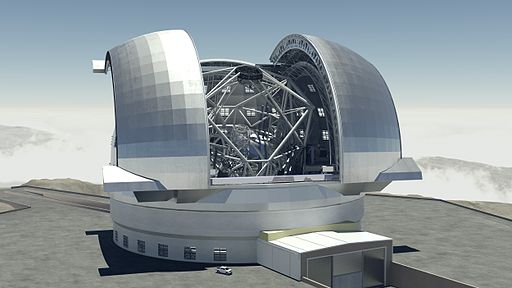
- European Extremely Large Telescope (ELT) (39 meter segmented mirror) It is located on the Cerro Armazones mountain in Chile’s Atacama desert.This telescope is a behemoth that will be by far the largest telescope in the world when it is completed. I have read different reports on the timeline of this telescope but it should be completed in either 2024 or 2025.
A note about the ELT: It is going to be ten times more powerful than the Hubble telescope. This telescope is going to be an event in human history, in my humble opinion.
- 30 Meter Telescope in Mauna Kea – The construction of this telescope has recently undergone problems and it may be delayed.
- The Giant Magellan Telescope (GMT) (7 mirrors each 8.4 meters in size) It is estimated that it will begin operation in 2027 with four of the seven mirrors. It will be constructed in the Las Campanas Observatory in Chile. They are actually building eight mirrors so they have a spare for maintenance. This picture shown here is an artists rendition of what the telescope would look like. Truck in the picture gives you an idea of the size of this telescope. And the brilliant thing I want to point out is that quite unique configuration of seven telescope mirrors.
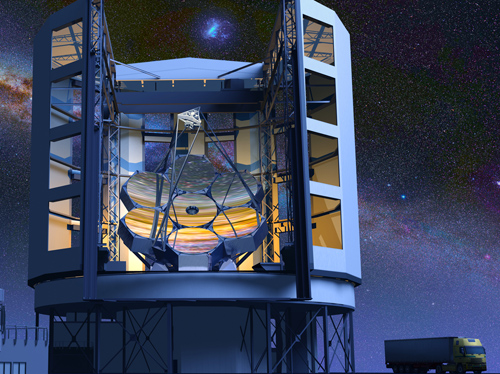
TELESCOPES IN SPACE:
- The Hubble Space Telescope (HST) – Is currently in service and in orbit around the Earth.
- The James Webb Space Telescope (JWST) ( planned) It is a segmented mirror telescope and it is scheduled to launch in 2021. And unlike the Hubble telescope the JWST will not orbit around the Earth. It will orbit around the sun and further out than the Earth. It is a 6.5 Meter telescope. This mirror is 2.5 times larger than the hubble and about 6 times larger in area.
- Kepler Space Telescope (KST) – Launched in 2009 – Kepler was specifically designed to look for planets in the habitable zone of stars in our area of the Milky Way galaxy. This telescope is now retired.
- Spitzer Space Telescope (SST) – It was launched in 2003 and is planned to be retired in 2020. It is an infrared space telescope.
THE LARGEST REFRACTOR TELESCOPE (A LENS RATHER THAN A MIRROR)
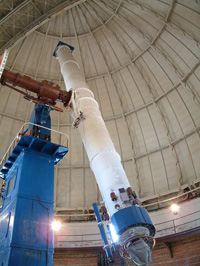
- The Yerkes Observatory 40 inches – This is a refractor telescope with a lens rather than a mirror. It is the largest refractor telescope in the world and it’s future is in doubt. It closed to the public in 2018 and there is a group in the process of preserving it. It is located in Williams Bay Wisconsin and is part of the University of Chicago Dept of Astronomy and Astrophysics.
Largest Radio Telescopes
- RATAN-600 Radio telescope in Zelenchukskaya Russia
- FAST – Five Hundred Meter Aperture Spherical Telescope
- Arecibo in Puerto Rico (picture below)
